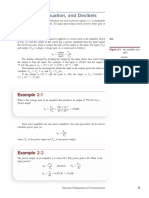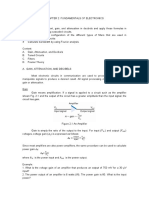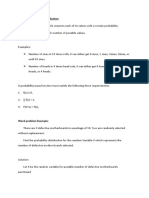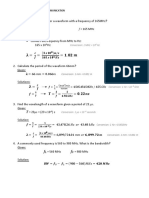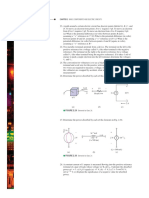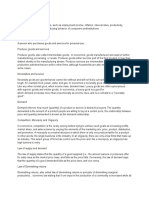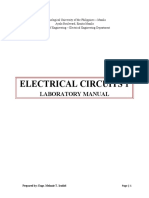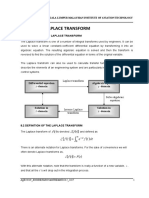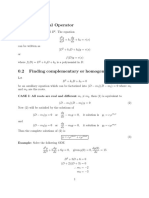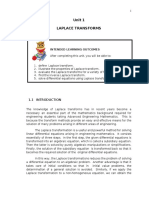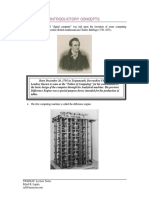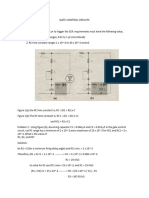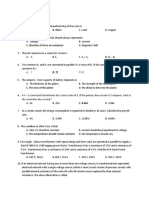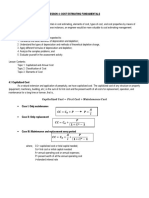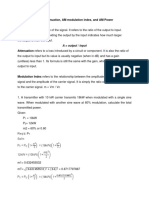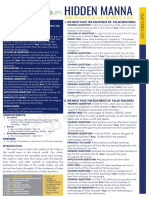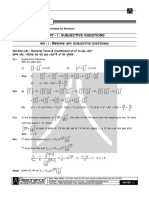0% found this document useful (0 votes)
137 views6 pagesDB Calculations
- Power gain is commonly expressed in decibels (dB) in electronic communications because input powers are usually small values like milliwatts (mW) or microwatts (μW), while output powers are larger values like megawatts (MW) or kilowatts (kW), resulting in gain ratios of hundreds or thousands.
- Power gain, voltage gain, and current gain can be expressed in bels, decibels, neper, dBm, dBW, dBK, dBμ, dBV, dBmV, and dBμV depending on the reference power, voltage, or current used.
- Common calculations involve determining gain values given input and output power, voltage
Uploaded by
Jenny ArutaCopyright
© © All Rights Reserved
We take content rights seriously. If you suspect this is your content, claim it here.
Available Formats
Download as PDF, TXT or read online on Scribd
0% found this document useful (0 votes)
137 views6 pagesDB Calculations
- Power gain is commonly expressed in decibels (dB) in electronic communications because input powers are usually small values like milliwatts (mW) or microwatts (μW), while output powers are larger values like megawatts (MW) or kilowatts (kW), resulting in gain ratios of hundreds or thousands.
- Power gain, voltage gain, and current gain can be expressed in bels, decibels, neper, dBm, dBW, dBK, dBμ, dBV, dBmV, and dBμV depending on the reference power, voltage, or current used.
- Common calculations involve determining gain values given input and output power, voltage
Uploaded by
Jenny ArutaCopyright
© © All Rights Reserved
We take content rights seriously. If you suspect this is your content, claim it here.
Available Formats
Download as PDF, TXT or read online on Scribd
/ 6


